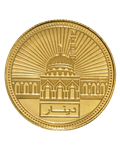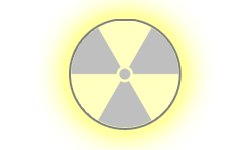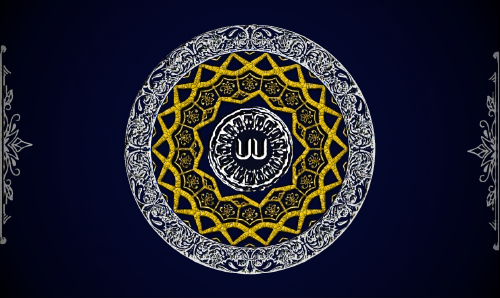Rising from the ashes of global unrest in 2008, the Emirate of Al-Jazira emerged as a bold Islamic revivalist project claiming both political sovereignty and spiritual legitimacy. Founded by a tribal confederation under the leadership of Sheikh Mahmoud al-Talafari, the Emirate was declared in Tel Afar as a sanctuary for order, tradition, and faith. Amid chaos, it forged stability, relying on tribal defense councils and a pragmatic governance model that embraced Arabs, Kurds, and Turkmen in its shura under one black banner of unity.
In 2010, the conquest of Mosul marked a turning point. The ancient city, once a jewel of Islamic civilization, was proclaimed the new capital, a move cementing the Emirate's legitimacy. Under Emir Abu Uthman Al-Turki, a scholarly and charismatic figure with deep religious credentials, the Emirate has established the shari'ah as the supreme law, enshrining Islamic jurisprudence and Abbasid-inspired administrative practices into every level of governance.
Far more than a mere revivalist state, Al-Jazira sees itself as a mujaddid—a renewer of the faith for a fractured ummah. Its governance model fuses the traditional authority of tribal elders with a centralized religious council led by the Emir, forming a uniquely modern theocracy grounded in classical Islamic principles. The regime promotes a vision of Islamic unity, conservative piety, and cultural stewardship—rooted in the belief that it is not merely a state, but the first spark of a civilizational renewal.
Despite international skepticism and regional opposition, the Emirate continues to expand its influence both ideologically and territorially, promoting itself as a beacon of order, faith, and legitimacy in a time of disarray.
Minister of Striving & War: Abu Nidal al-Shishani
Minister of Religious Affairs: Abdul Basit ibn Khalid al-Dodurgawi
Minister of Public Affairs: Muhammad ibn Jamal al-Afshari
Minister of Internal Security: Ibrahim al-Khatib al-Dulaimi
Minister of Justice: Mujahid ibn Sufyan al-Khandafi
Minister of Commerce & Finance: Adnan ibn Jad al-Hasakawi
Minister of Education: Mustafa ibn Alp-Arslan al-Qyzyqi
Minister of Wildlife & Agriculture: Zubayr ibn Umar al-Anzi
Minister of Energy & Resources: Muhammad ibn Hussain al-Deiri
Minister of Public Health: Uthman ibn Ercüment al-Bayındıri
Minister of Development & Infrastructure: Abu Ayman al-Maslawi
Minister of Transportation: Abu Huzam ibn Yahya al-Hejazi
Minister of Culture & Tourism: Abu Salim ibn Ubaydah al-Raqqawi
Minister of Labour & Employment: Rashid ibn Abdülmecid al-Bayati
Minister of Youth Activity & Sports: Abu Dawud al-Bajelani
Director of Communications + Spokesman: Hassan ibn Yusuf al-Ruhawi
Minister of Foreign Affairs: Ali ibn Ayyub al-Hamawandi
Head Judge: Qadi Abdullah ibn Talha al-Talafari
Ambassador to the Kingdom of New Ghaza: Ramy ibn Amjad al-Dulaimi
Ambassador to the Arab Republic of Egypt: Hassan ibn Dawud al-Ubaidi
Ambassador to the United Ummah: Abu Yasir al-Maslawi
Recognition & Relations Application
Website being worked on
| National Factbook |
| Flag: |

|
| Nation Name: |
Al-Jazira |
| Leader Name: |
Abu Uthman al-Turki |
| Currency: |

Gold Dinar |
| National Animal: |

Lion |
| History: |
The region historically known as Al-Jazira—the northern part of Mesopotamia between the Tigris and Euphrates—was a vital cultural and trade hub during the Islamic Golden Age. Tel Afar, strategically located on caravan routes, flourished under the Abbasids as a center of scholarship and commerce.
Following the Mongol invasions and regional fragmentation, Al-Jazira's influence waned, its cities falling under various tribal, Persian, and later Ottoman control.
In 2008, in the aftermath of regional instability, a tribal confederation led by Sheikh Mahmoud al-Talafari declared the formation of the Emirate of Al-Jazira, with Tel Afar as its capital. The new polity quickly gained traction by providing security through localized tribal defense councils and establishing inclusive governance for Arabs, Kurds, and Turkmen. The capital shifted to Mosul following its takeover in 2010.
"After the Crisis Wars begun in 1993, the world was fragmented between warlords, gangs, mercenaries, and rump states & stateless, with the Middle East being no exception. Every street was a front line and every neighborhood was run by a different faction. Killings, abductions, acts of ethnic violence, and robbings were a common sight. Sheikh Mahmoud al-Talafari, a highly regarded Islamic scholar, was fed up with all the corruption he had witnessed in his hometown of Tel Afar. Al-Talafari was able to unite several of the tribes in region, and despite being few in numbers and fewer in weapons, drove out the criminals from the city completely. When news spread of what has happened, many of the oppressed tribes in Upper Mesopotamia rushed to the city to swear their allegiance to him and join his ranks, hoping that this is the start of something that will lead to the liberation of their lands as well. They begged Sheikh Mahmoud to declare a polity in Tel Afar, and while the he disliked the idea of being a ruler, it was clear that he was the only one qualified to lead. So in 3 months following the liberation of Tel Afar, Sheikh Mahmoud al-Talafari declared the Emirate of Al-Jazira, an Islamic polity that takes the Qur'an as its rulebook and shari'ah as the supreme law. The Sheikh was an impartial ruler; all the tribes were regarded equally no matter where they originated from or what language they spoke. The Emirate expanded at light speed. First they captured much of the Upper Mesopotamian countryside, then Mosul, then Deir ez-Zor and al-Hasakah." |
| Geography |
| Continent: |
Asia |
| Land Area: |
29,654.05 sq. km |
| Terrain: |
Upper Mesopotamia, also known as the Jazira (Arabic for "island"), refers to the northern region of Mesopotamia, lying between the upper Tigris and Euphrates rivers. This region encompasses parts of modern-day northeastern Syria, southeastern Turkey, and northern Iraq.
The terrain of Al-Jazira/Upper Mesopotamia is characterized by a combination of rolling plains, fertile river valleys, and low-lying plateaus. In contrast to the flat alluvial plains of Lower Mesopotamia, Upper Mesopotamia features gently undulating topography with occasional limestone outcrops and hills. The region gradually rises in elevation from the south toward the north and west, where it meets the foothills of the Taurus Mountains.
Soils in this region are generally fertile, particularly along the river valleys, supporting early agriculture and settlement. The Tigris and Euphrates rivers, along with their tributaries such as the Balikh and Khabur, play a vital role in shaping the landscape, providing both irrigation and natural transportation routes.
The semi-arid climate, marked by hot, dry summers and cool, wetter winters, supports steppe vegetation, with more lush areas near water sources. This varied terrain and access to water made Al-Jazira a crucial area for the development of early human civilizations. |
| Highest Peak: |
Jabal Sasan,
637 meters
|
| Lowest Valley: |
Tel Afar Plateau,
270 meters
|
| Climate: |
The climate of Al-Jazira is classified as semi-arid, with notable seasonal and regional variation influenced by both elevation and proximity to water sources. This climate plays a crucial role in the region’s agricultural potential and settlement patterns.
Al-Jazira experiences a continental climate pattern with hot, dry summers and cool to cold winters. Summer temperatures often exceed 35°C (95°F), particularly in the southern plains, with prolonged periods of drought and minimal rainfall. In contrast, winters can be chilly, especially in the higher northern and western areas near the Taurus foothills, where temperatures may drop below freezing and occasional snowfall can occur.
Annual precipitation ranges between 250 and 600 millimeters (10–24 inches), decreasing from north to south. Most rainfall occurs between November and April, with the peak during winter and early spring. The northern parts of the region, closer to the mountains, receive more precipitation and are therefore more agriculturally productive. In contrast, southern areas near the transitional zone with Lower Mesopotamia are drier and more reliant on irrigation.
Due to the unpredictability of rainfall and the risk of drought, ancient and modern inhabitants of Al-Jazira have relied heavily on river-based irrigation systems to sustain agriculture. These climatic conditions also influenced the region's early innovations in water management and settlement planning.
Overall, while the semi-arid climate imposes limitations, its seasonal rainfall and river systems have historically made Al-Jazira a viable and often prosperous agricultural zone, especially during periods of favorable climatic stability. |
| People & Society |
| Population: |
1,591,919 people |
| Demonym: |
Jaziri |
| Demonym Plural: |
Jaziris |
| Ethnic Groups: |
Arab - 72.7%
Turkmen - 13.8%
Kurd - 12.3% |
| Languages: |
Arabic - 94.3%
Turkish - 14.1%
Kurdish - 12.4% |
| Religions: |
Islam - 98.7%
Christianity - 1.3% |
| Health |
| Life Expectancy: |
67 years |
| Obesity: |
14.7% |
| Alcohol Users: |
0% |
| Tobacco Users: |
0% |
| Cannabis Users: |
0% |
| Hard Drug Users: |
0% |
| Economy |
| Description: |
|
| Average Yearly Income: |
$66.57 |
| Gross Domestic Product (GDP): |
$3,353,558,485.00 |
| GDP per Capita: |
$2,106.61 |
| Gross National Income (GNI): |
$1,461,906,395.00 |
| Industries: |
The economy of the Emirate of Al-Jazira is shaped by the region’s natural endowments, wartime conditions, and a pragmatic adaptation to the fragmented geopolitical landscape of post-war Mesopotamia. Despite the lack of formal international recognition outside of the United Ummah or defined national borders, the Emirate has cultivated a robust and diversified revenue structure centered around strategic resource control, industrial productivity, and inter-regional trade.
War Spoils and Convoy Raiding: A significant source of material wealth comes from military operations against warlords and rival polities, particularly along frontier zones and trade corridors. Known as ‘ghanimah’ (spoils), the acquisition of vehicles, fuel, weapons, currency, and other goods from defeated enemies is not only religiously sanctioned but institutionally organized.
Specialized units under the Ministry of Striving & War are tasked with intercepting enemy logistics convoys. Captured materiel is sorted, documented, and redistributed by the Office of War Assets, with surplus goods entering internal markets or being traded regionally.
Oil Extraction and Refining: The Emirate of Al-Jazira sits atop one of the most resource-rich petroleum zones in the Middle East. Numerous operational wells in and around Sinjar Tel Afar, and Deir ez-Zor provide a continuous stream of crude oil, a cornerstone of the Emirate’s economy. While lacking the infrastructure for mass international shipping, oil is transported via secure convoys or pipelines to neighboring actors through clandestine agreements or proxy trade. A growing number of local refineries produce diesel, gasoline, and kerosene for domestic use, reducing dependency on outside fuel and supporting the Emirate’s military logistics. Refined products are also sold in controlled marketplaces or bartered in regional black markets, often with intermediary traders along the Upper Euphrates basin.
Steel Production and Milling: Al-Jazira operates several steel mills varying in size, particularly in industrial zones surrounding Mosul and Al-Hasakah. These facilities, some of which are rehabilitated from pre-war infrastructure, are primarily fueled by domestic oil and powered by repurposed electrical grids or generator fields. Steel Output is utilized for military-grade equipment, structural reinforcement, and construction material. A portion of steel production is also traded or exported in exchange for medical supplies, electronics, and spare parts. Steel remains a strategic material, and its production is tightly overseen by the Ministry of Development.
Agriculture and Livestock: The fertile plains of Upper Mesopotamia, nourished by the Tigris and Euphrates rivers, continue to support a thriving agricultural sector. This sector is managed by tribal cooperatives and local councils, with strategic oversight by the Ministry of Wildlife & Agriculture. Major crops include wheat, barley, lentils, chickpeas, and dates. The region sustains a large pastoral population of livestock such as sheep, goats, and camels. Dairy production, wool, and meat are commonly sold in local markets. Much of the food surplus is exported to neighboring regions, especially during harvest seasons. Agricultural exports serve both as a soft power tool and a source of hard currency.
Retail and Local Commerce: Throughout the Emirate’s cities and towns, open-air bazaars, covered markets, and multi-level malls are a vibrant feature of economic life. From Mosul’s historic souqs to newer shopping centers in Tel Afar and al-Hasakah, commerce is lively and largely unregulated. Market Commodities include textiles, spices, handcrafted goods, electronics (both salvaged and imported), and war surplus items. The Emirate does not impose a retail sales tax, which encourages trade and lowers prices for local consumers. Instead, merchants contribute through zakat and regulated levies based on property. Markets often serve a dual role as community hubs and economic engines, overseen locally by market councils or appointed inspectors. |
| Military |
| History: |
The Armed Forces of the Emirate of Al-Jazira trace their origins to the Battle of Tel Afar in 2008, during which Sheikh Mahmoud al-Talafari, a renowned Islamic scholar, rallied a confederation of tribal fighters to expel criminals and warlords from his native city. At the time, these fighters were lightly armed, lacked formal training, and were bound primarily by loyalty to their tribes and to Sheikh Mahmoud’s vision of divine justice.
However, it was their discipline, religious conviction, and self-sacrifice that made them effective. Against better-equipped militias, they prevailed through tactical coordination and an unshakable belief in the righteousness of their cause. After the success in Tel Afar, tribal contingents from across Upper Mesopotamia flocked to join the liberation movement. These disparate forces were restructured into a conventional military institution by Abu Nidal al-Shishani, formalized as the Emirate Ground Forces. |
| Soldiers: |
118,073 |
| Tanks: |
9,771 |
| Aircraft: |
312 |
| Ships: |
115 |
| Missiles: |
0 |
| Nuclear Weapons: |
0 |
| Last Updated: 08/12/2025 03:29 am |




















